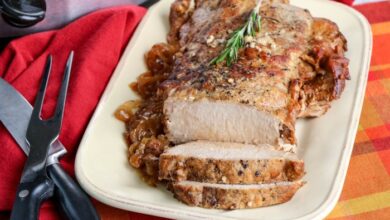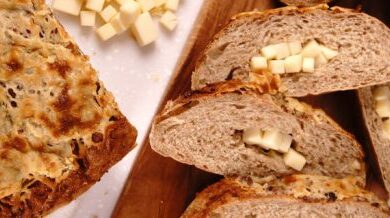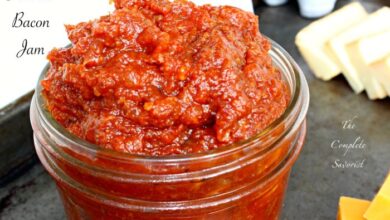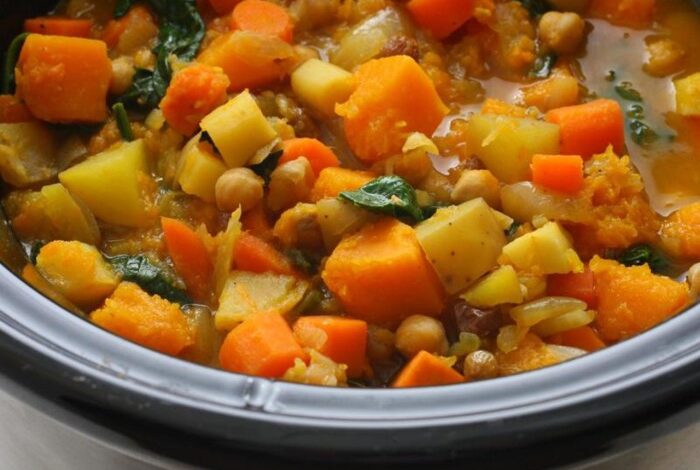
Slow Cooker Squirrel and Veggies: A Delicious and Sustainable Meal
Slow cooker squirrel and veggies takes center stage, offering a unique and delicious way to enjoy a sustainable meal. This combination brings together the rich flavor of squirrel meat with the hearty goodness of seasonal vegetables, all simmered to perfection in a slow cooker.
Whether you’re an experienced hunter or a curious foodie, this dish presents a wonderful opportunity to explore new culinary horizons and embrace a more sustainable approach to eating.
Squirrel, often overlooked as a food source, is a lean and flavorful protein packed with nutrients. When paired with the right vegetables, it creates a satisfying and healthy meal that can be enjoyed in countless ways. This guide will delve into the art of preparing squirrel for slow cooking, selecting the perfect vegetables to complement its flavor, and crafting recipes that tantalize your taste buds.
We’ll also explore the historical and cultural significance of squirrel hunting and cooking, along with the ethical considerations surrounding this practice. Join me as we uncover the secrets to creating delicious and sustainable slow cooker squirrel and veggie dishes.
Squirrel Preparation
Preparing squirrel for slow cooking requires a few key steps to ensure a tender and flavorful result. From skinning and cleaning to seasoning and marinating, each stage plays a crucial role in maximizing the deliciousness of this unique protein source.
Skinning and Cleaning
Skinning and cleaning a squirrel is essential before cooking. This process removes the fur and any unwanted parts, leaving you with clean, usable meat. Start by removing the head and feet, then carefully skin the squirrel, working from the tail to the head.
Next, remove the entrails and wash the carcass thoroughly under cold running water. It is important to remove any remaining fur or debris.
Cutting the Squirrel
After cleaning, cut the squirrel into smaller pieces for even cooking. The size of the pieces will depend on your personal preference and the size of your slow cooker. For example, you can cut the squirrel into quarters or smaller chunks.
I’m all about finding creative ways to use what’s available, and that’s why my slow cooker squirrel and veggies recipe has become a favorite. It’s a reminder that resourceful cooking can be delicious! And speaking of resourceful, have you ever tried fried dandelions Appalachian style ?
It’s a unique and tasty way to use a common weed, just like my squirrel recipe is a unique way to use a sometimes-overlooked protein. Both dishes are all about making the most of what we have, and that’s something I really appreciate.
Seasoning Squirrel Meat
Seasoning squirrel meat before slow cooking is crucial for enhancing its flavor. Many options exist, and the best choice depends on your preferred taste and the accompanying vegetables. Some popular seasoning combinations include:
- Classic Southern Style:A blend of salt, pepper, paprika, garlic powder, and onion powder. This combination adds a savory and slightly spicy flavor to the squirrel.
- Herbed and Spicy:A mix of herbs like thyme, rosemary, and oregano, combined with chili powder or cayenne pepper. This seasoning provides a complex flavor profile with a hint of heat.
- Sweet and Savory:A combination of brown sugar, smoked paprika, and a touch of cumin. This blend creates a sweet and smoky flavor that complements root vegetables like carrots and potatoes.
Marinating Squirrel Meat
Marinating squirrel meat before slow cooking is an excellent way to tenderize the meat and infuse it with flavor. The acidic ingredients in a marinade break down tough proteins, resulting in a more tender and flavorful dish.
A simple and flavorful marinade can be made with:
- 1 cup soy sauce
- 1/2 cup apple cider vinegar
- 1/4 cup brown sugar
- 1 tablespoon garlic powder
- 1 tablespoon onion powder
- 1 teaspoon black pepper
Combine all the marinade ingredients in a bowl and whisk until well combined. Add the squirrel pieces to the marinade, ensuring they are fully submerged. Refrigerate the marinade for at least 4 hours or overnight for maximum flavor and tenderness.
Vegetable Selection
Selecting the right vegetables to complement your slow-cooked squirrel is essential for a flavorful and satisfying meal. Consider the cooking times and flavor profiles of various vegetables to create a harmonious blend of textures and tastes.
Root Vegetables
Root vegetables are a natural pairing for squirrel, offering earthy and sweet notes that complement the gamey flavor. Their dense structure holds up well to long cooking times, softening beautifully in the slow cooker.
- Carrots:Their sweetness and vibrant color add a touch of brightness to the dish.
- Potatoes:Choose starchy potatoes like russets or Yukon Gold for a creamy texture.
- Parsnips:These root vegetables offer a sweet and nutty flavor that pairs well with squirrel.
- Beets:Their earthy sweetness and vibrant color add depth and complexity to the dish.
Leafy Greens, Slow cooker squirrel and veggies
While not as common in slow cooker recipes, leafy greens can add a refreshing element to your squirrel dish. Choose hearty greens that can withstand the long cooking time without becoming mushy.
- Collard Greens:Their robust flavor and texture hold up well in the slow cooker.
- Kale:Its slightly bitter flavor and hearty texture complement the gamey notes of squirrel.
- Spinach:While delicate, spinach can be added towards the end of the cooking time for a burst of flavor and nutrients.
Other Vegetables
Beyond root vegetables and leafy greens, other vegetables can enhance the flavor and texture of your slow-cooked squirrel.
- Onions:Their savory flavor adds depth and complexity to the dish.
- Garlic:A touch of garlic enhances the savory notes of the squirrel and vegetables.
- Celery:Its subtle flavor and crisp texture add another dimension to the dish.
- Mushrooms:Their earthy flavor and meaty texture complement the squirrel well.
Vegetable Cooking Times
To ensure your vegetables cook evenly and retain their texture, it’s crucial to consider their individual cooking times.
- Root Vegetables:Root vegetables like carrots, potatoes, parsnips, and beets typically require 2-3 hours of cooking time in a slow cooker.
- Leafy Greens:Hearty greens like collard greens and kale can be added in the last hour of cooking, while delicate greens like spinach can be added in the last 30 minutes.
- Other Vegetables:Onions, garlic, celery, and mushrooms can be added at the beginning of the cooking process.
Slow Cooker Recipes
The slow cooker is a wonderful tool for preparing delicious and flavorful meals, especially when it comes to game meats like squirrel. The long, slow cooking process helps to tenderize the meat and allows the flavors to meld and develop.
Below are a few slow cooker recipes that showcase the versatility of squirrel in the kitchen.
Squirrel and Vegetable Stew with a Rich Sauce
A hearty and satisfying stew is a classic slow cooker dish, and squirrel pairs beautifully with a variety of vegetables. This recipe uses a rich, flavorful sauce that adds depth and complexity to the stew.
The key to a good stew is layering flavors. Start with a base of aromatics, like onions, garlic, and carrots, then add herbs and spices for complexity. A touch of sweetness from brown sugar or maple syrup balances the savory flavors.
- Ingredients:
- 1 pound squirrel meat, trimmed and cut into bite-sized pieces
- 1 tablespoon olive oil
- 1 large onion, chopped
- 2 cloves garlic, minced
- 2 carrots, chopped
- 1 celery stalk, chopped
- 1 (14.5 ounce) can diced tomatoes, undrained
- 1 cup beef broth
- 1/2 cup red wine (optional)
- 1 tablespoon Worcestershire sauce
- 1 teaspoon dried thyme
- 1/2 teaspoon salt
- 1/4 teaspoon black pepper
- 1 tablespoon brown sugar or maple syrup
- 1/2 cup chopped fresh parsley
- Instructions:
- In a large skillet, heat the olive oil over medium heat. Brown the squirrel meat on all sides. Remove from the skillet and set aside.
- Add the onion, garlic, carrots, and celery to the skillet and cook until softened, about 5 minutes.
- Transfer the vegetables to the slow cooker. Add the browned squirrel meat, diced tomatoes, beef broth, red wine (if using), Worcestershire sauce, thyme, salt, pepper, and brown sugar or maple syrup. Stir to combine.
- Cover and cook on low heat for 6-8 hours, or until the squirrel is tender and the vegetables are cooked through.
- Stir in the chopped parsley before serving.
Slow Cooker Squirrel and Vegetable Casserole with a Creamy Sauce and Crispy Topping
This casserole is a delicious and satisfying meal that is perfect for a weeknight dinner. The creamy sauce adds richness and moisture, while the crispy topping provides a satisfying crunch.
The key to a successful casserole is a flavorful sauce that binds the ingredients together. A creamy sauce made with milk, cream, or yogurt adds richness and moisture, while a flavorful base of herbs and spices enhances the overall taste.
- Ingredients:
- 1 pound squirrel meat, trimmed and cut into bite-sized pieces
- 1 tablespoon olive oil
- 1 large onion, chopped
- 2 cloves garlic, minced
- 2 carrots, chopped
- 1 celery stalk, chopped
- 1 (14.5 ounce) can diced tomatoes, undrained
- 1 cup chicken broth
- 1/2 cup heavy cream
- 1/4 cup grated Parmesan cheese
- 1 teaspoon dried thyme
- 1/2 teaspoon salt
- 1/4 teaspoon black pepper
- 1/2 cup bread crumbs
- 2 tablespoons melted butter
- Instructions:
- In a large skillet, heat the olive oil over medium heat. Brown the squirrel meat on all sides. Remove from the skillet and set aside.
- Add the onion, garlic, carrots, and celery to the skillet and cook until softened, about 5 minutes.
- Transfer the vegetables to the slow cooker. Add the browned squirrel meat, diced tomatoes, chicken broth, heavy cream, Parmesan cheese, thyme, salt, and pepper. Stir to combine.
- Cover and cook on low heat for 6-8 hours, or until the squirrel is tender and the vegetables are cooked through.
- While the casserole is cooking, prepare the topping. In a small bowl, combine the bread crumbs and melted butter. Stir until evenly coated.
- After the casserole has cooked, sprinkle the bread crumb topping over the top.
- Cover and cook on high heat for 15 minutes, or until the topping is golden brown and crispy.
Cooking Techniques

While slow cookers are known for their forgiving nature, a few techniques can elevate your squirrel and vegetable dish to new heights of flavor and tenderness.
Browning the Squirrel Meat
Browning the squirrel meat before adding it to the slow cooker is a crucial step for developing rich, savory flavors. Searing the meat in a hot pan creates a caramelized crust that adds depth and complexity to the final dish.
This process also helps to lock in moisture, ensuring the squirrel remains juicy and tender after slow cooking.
Layering Ingredients for Optimal Flavor
Properly layering ingredients in your slow cooker is essential for achieving balanced flavors and textures. The key is to arrange the ingredients in a way that allows heat and moisture to distribute evenly throughout the dish.
- Start by placing the denser, slower-cooking ingredients at the bottom of the slow cooker, such as root vegetables like carrots, potatoes, or turnips.
- Next, add the browned squirrel meat, ensuring it’s evenly distributed across the bottom layer.
- Finally, top the meat with the more delicate vegetables like onions, peppers, or mushrooms.
This layering technique allows the bottom ingredients to cook slowly and release their flavors into the liquid, while the top layer remains tender and flavorful.
Cooking Time and Temperature
The ideal cooking time and temperature for slow-cooked squirrel and vegetables vary depending on the size and type of squirrel, as well as the desired level of tenderness.
Slow cooker squirrel and veggies is a hearty, comforting meal that’s perfect for a chilly evening. The slow cooker does all the work, so you can relax and enjoy the process. To add a fresh, vibrant touch, I love serving it with a side of grilled hearts of romaine, which I learned to make from this fantastic recipe I found online.
The smoky char of the romaine contrasts beautifully with the savory flavors of the squirrel and veggies, making for a truly delicious and satisfying meal.
- For a squirrel weighing between 1-2 pounds, a cooking time of 6-8 hours on low heat (200°F) or 3-4 hours on high heat (300°F) is recommended.
- Smaller squirrels may require less cooking time, while larger squirrels may need longer.
- For vegetables, aim for a cooking time that allows them to become tender but not mushy.
- Root vegetables typically require longer cooking times than leafy greens.
It’s always a good idea to check the doneness of both the squirrel and vegetables before serving. The squirrel should be cooked through, and the vegetables should be tender to the bite.
Serving and Presentation
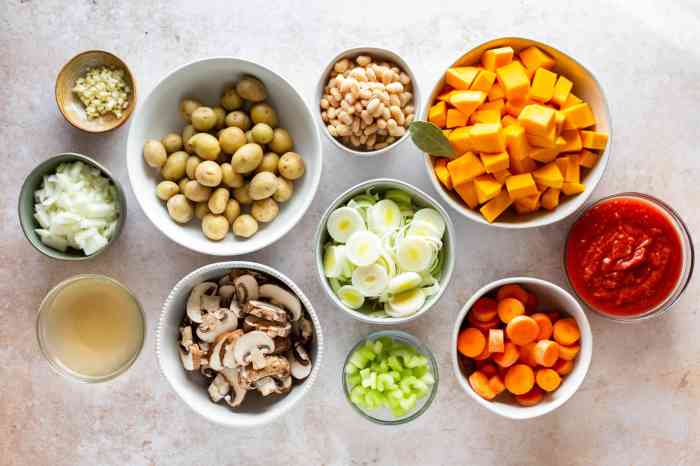
Serving slow-cooked squirrel and vegetables can be a delightful culinary experience. You can present this dish in various ways, making it suitable for both casual and formal settings.
Serving Suggestions
When serving slow-cooked squirrel and vegetables, you have a variety of options for side dishes and garnishes. Here are some ideas:
- Side Dishes:Consider serving your slow-cooked squirrel with creamy mashed potatoes, fluffy rice pilaf, or a hearty salad.
- Garnishes:Enhance the visual appeal and flavor of your dish with garnishes like fresh herbs, chopped nuts, or a drizzle of balsamic glaze.
Presentation Styles
The way you present your slow-cooked squirrel and vegetables can greatly influence the dining experience. Here are a few presentation styles you can explore:
| Presentation Style | Description |
|---|---|
| Individual Serving Bowls | This classic presentation allows each diner to enjoy their portion of squirrel and vegetables in a separate bowl. You can add a decorative touch with a sprig of rosemary or a dollop of sour cream. |
| Family-Style Platter | A family-style platter provides a more communal dining experience. Arrange the slow-cooked squirrel and vegetables artfully on a large platter, allowing guests to serve themselves. |
| Casserole Dish | For a rustic and hearty presentation, serve your slow-cooked squirrel and vegetables directly from the casserole dish. This method is ideal for potlucks or informal gatherings. |
Reheating
To ensure optimal flavor and texture, reheat slow-cooked squirrel and vegetables gently.
I’ve been on a bit of a wild food kick lately, experimenting with slow cooker squirrel and veggies. It’s definitely a unique flavor profile, and I’m surprised at how well it works with root vegetables and herbs. But sometimes I crave something a bit lighter, and that’s when I turn to dishes like utokias ginger shrimp and broccoli with garlic.
The bright, garlicky flavors are a refreshing change of pace, and the shrimp cooks up perfectly tender. Then, back to my slow cooker squirrel adventures! Who knows what culinary surprises await?
Reheating in the oven at a low temperature (300°F or 150°C) for 15-20 minutes is recommended. This allows the dish to warm through evenly without drying out.
You can also reheat the dish in a microwave-safe container on low power for a shorter time. However, be mindful that microwaving can sometimes affect the texture of the meat.
Nutritional Information
Squirrel meat and vegetables offer a nutritious and delicious meal. While squirrel meat is often overlooked, it provides a rich source of protein and various essential vitamins and minerals. The vegetables included in slow cooker recipes add fiber, antioxidants, and other vital nutrients, making this dish a wholesome and balanced option.
Squirrel Meat Nutrition
Squirrel meat is a lean source of protein, providing approximately 20 grams of protein per 3-ounce serving. This makes it a great choice for those looking to increase their protein intake. It also contains essential vitamins and minerals, including:
- Iron:Iron is crucial for red blood cell production, which carries oxygen throughout the body. A 3-ounce serving of squirrel meat provides around 2 milligrams of iron, approximately 11% of the recommended daily intake for men and 16% for women.
- Vitamin B12:This vitamin is essential for nerve function and cell growth. Squirrel meat is a good source of vitamin B12, providing about 0.5 micrograms per 3-ounce serving, roughly 20% of the daily requirement.
- Zinc:Zinc plays a role in immune function, wound healing, and cell growth. Squirrel meat provides a moderate amount of zinc, contributing around 2 milligrams per 3-ounce serving, approximately 14% of the recommended daily intake.
Vegetable Nutrition
The vegetables commonly paired with squirrel in slow cooker recipes contribute a wide range of nutrients. Here are some examples:
- Carrots:Rich in vitamin A, beta-carotene, and fiber, carrots promote eye health, boost the immune system, and aid digestion.
- Potatoes:A good source of vitamin C, potassium, and fiber, potatoes provide energy, support heart health, and regulate blood pressure.
- Onions:Onions are packed with antioxidants, sulfur compounds, and vitamin C, offering anti-inflammatory benefits, reducing the risk of certain cancers, and supporting cardiovascular health.
- Celery:Low in calories and rich in vitamins, minerals, and antioxidants, celery supports digestion, reduces inflammation, and promotes hydration.
Nutrient Preservation Through Slow Cooking
Slow cooking is a gentle method that helps preserve nutrients in both squirrel meat and vegetables. The long, low-temperature cooking process allows for minimal nutrient loss compared to other methods like frying or boiling.
Slow cooking methods retain more nutrients by minimizing exposure to high temperatures and water, which can leach vitamins and minerals.
Additionally, the slow cooking process allows the flavors to meld and create a delicious and wholesome meal.
Cultural Significance
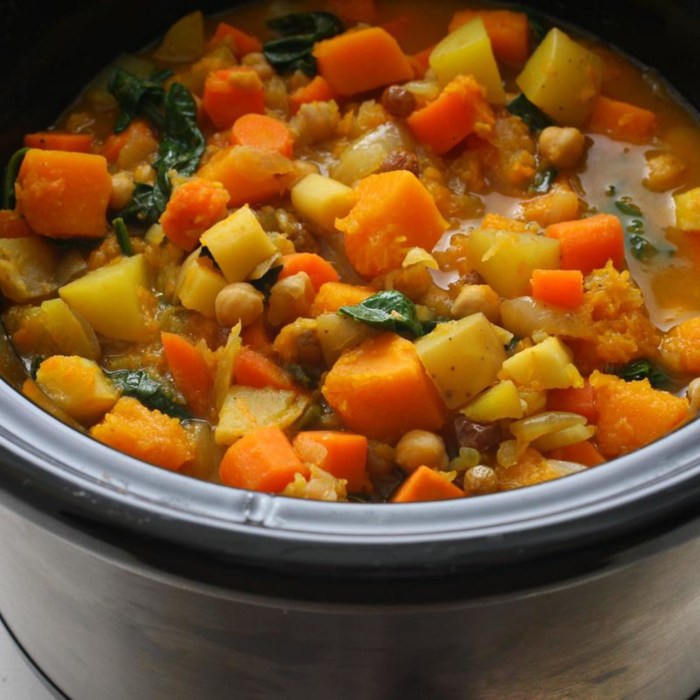
Squirrel hunting and cooking have a long and rich history in various cultures, often intertwined with local traditions, food availability, and survival strategies. This practice has been particularly prevalent in regions where squirrels were abundant and accessible, serving as a valuable source of protein and sustenance.
Squirrel Hunting and Cooking in North America
Squirrel hunting has been a significant part of the cultural heritage of many Native American tribes in North America. For centuries, these tribes relied on squirrels as a staple food source, utilizing various hunting techniques, such as trapping, bow and arrow, and snares.
The meat was often roasted, boiled, or dried for preservation.
“Squirrel hunting was a vital part of our ancestors’ lives, providing food for our families and communities.”
Elder of the Cherokee Nation
European settlers also adopted squirrel hunting as a means of sustenance and recreation. The popularity of squirrel hunting led to the development of numerous recipes and cooking methods, reflecting regional differences and culinary traditions. For instance, in the Southern United States, squirrel is often prepared with gravy, cornbread, and other Southern staples, while in the Northeast, it may be featured in stews and casseroles.
Squirrel Hunting and Cooking in Europe
In Europe, squirrel hunting has been practiced for centuries, with records dating back to the Middle Ages. In some regions, squirrel was considered a delicacy, particularly in France, where it was often prepared in elaborate dishes like “écureuil en civet,” a slow-cooked stew with wine and spices.
“Squirrel was a common sight on the tables of the aristocracy, often served with rich sauces and fine wines.”
Historical account of European cuisine
However, squirrel hunting declined in popularity in Europe during the 20th century due to changes in land use, urbanization, and the availability of other protein sources. Nonetheless, it continues to be a traditional practice in some rural areas, particularly in Eastern Europe and the Balkans.
Squirrel Hunting and Cooking in Asia
In Asia, squirrel hunting and cooking are less common than in other parts of the world. However, squirrels are consumed in some regions, particularly in Southeast Asia, where they are often used in stir-fries, curries, and other local dishes.
“In parts of Thailand and Vietnam, squirrel meat is considered a delicacy and is often served with spicy sauces and herbs.”
Culinary expert on Southeast Asian cuisine
The use of squirrels as a food source in Asia is likely influenced by factors such as availability, local culinary traditions, and cultural preferences.
Sustainability and Ethics: Slow Cooker Squirrel And Veggies
Squirrels, like any other wild animal, play a crucial role in the ecosystem, and their hunting and consumption raise ethical considerations regarding sustainable practices and wildlife conservation. While enjoying the unique flavor and texture of squirrel meat, it’s essential to acknowledge the responsibility we bear towards maintaining a healthy and balanced ecosystem.
Ethical Considerations in Squirrel Hunting
Squirrel hunting, like any other form of hunting, demands a mindful approach to ensure ethical practices and minimize any negative impact on the environment. Ethical considerations in squirrel hunting focus on responsible harvesting, minimizing harm to non-target species, and contributing to sustainable wildlife populations.
- Respecting Hunting Regulations:Adhering to local hunting regulations, including bag limits, hunting seasons, and designated areas, ensures responsible harvesting and prevents overhunting.
- Using Humane Hunting Methods:Employing humane hunting methods, such as trapping or using firearms with accurate shots, minimizes suffering and maximizes the chances of a clean kill.
- Avoiding Waste:Properly utilizing the harvested squirrel by consuming or preserving the meat minimizes waste and honors the animal’s sacrifice.
Environmental Impact of Squirrel Hunting
The environmental impact of squirrel hunting is often minimal when practiced responsibly. However, it’s essential to consider the potential impact on squirrel populations and their habitats.
- Population Management:In some areas, squirrels can be considered pests due to their potential to damage crops or property. In these cases, regulated hunting can help manage populations and prevent ecological imbalances.
- Habitat Preservation:Hunting practices that minimize disturbance to squirrel habitats, such as avoiding excessive noise or leaving litter, contribute to habitat preservation.
- Sustainable Harvesting:Following sustainable harvesting practices, such as adhering to bag limits and hunting seasons, ensures the long-term health of squirrel populations.
Tips for Responsible Squirrel Hunting
Responsible squirrel hunting involves a combination of ethical practices, environmental awareness, and respect for the animal.
- Learn About Squirrel Ecology:Understanding squirrel behavior, habitat preferences, and breeding patterns helps hunters make informed decisions about hunting times and locations.
- Minimize Habitat Disturbance:Avoid excessive noise, leaving litter, or disrupting squirrel nesting areas to minimize habitat disturbance.
- Use Selective Hunting Methods:Choose hunting methods that target specific squirrels, such as trapping or using firearms with accurate shots, to avoid unnecessary harm to non-target species.
- Support Conservation Efforts:Contribute to conservation efforts by supporting organizations dedicated to wildlife habitat preservation and sustainable hunting practices.

